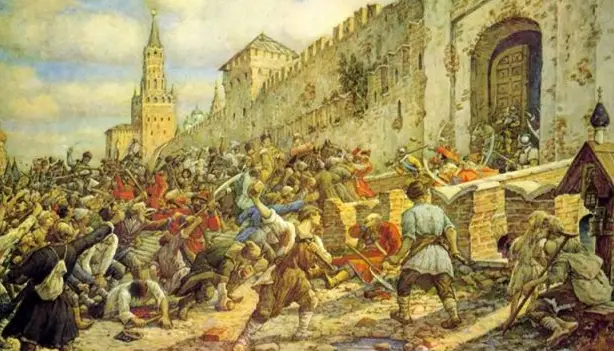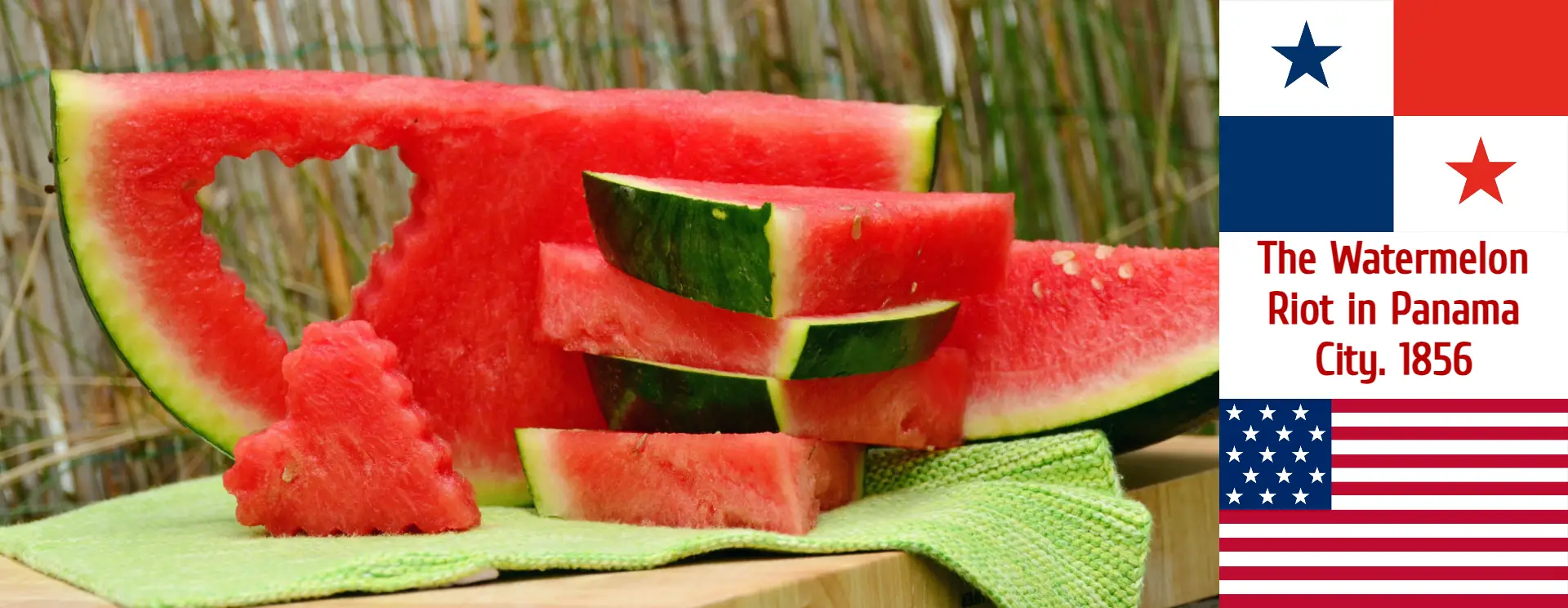Watermelon Riot Panama City 1856

On April 15, 1856, Panama City, then the capital of Panama State in the Republic of New Granada, was thrown into chaos and violence. This event, known as the Watermelon Riot, began with an apparently minor incident but quickly escalated, revealing deep-seated tensions between American travellers and the local Panamanian population.
The Watermelon Riot Escalated Quickly
The riot was sparked by a conflict over a slice of watermelon. American traveller Jack Oliver took a slice from a local vendor, Jose Manuel Luna, and refused to pay. The situation escalated when Oliver brandished a gun, and Luna responded with a knife. Although another passenger paid for the fruit, the crowd’s anger had already ignited, leading to widespread violence.
An enraged mob of locals, armed with machetes, stones, and other weapons, descended on the area. The Americans, many of whom were armed, retaliated, turning a minor altercation into a deadly riot.
Destruction, Carnage and Dead Americans
Initially, The Watermelon Riot centred around American-owned businesses in La Cienaga, near the train station. Establishments like the Pacific House and Ocean Hotel were destroyed. The riot then moved to the railroad station, where most Americans had sought refuge. By the time peace was restored, at least fifteen Americans and two Panamanians were dead, with many more wounded. The destruction of American properties and the railway underscored the unrest’s severity.
Investigations Found the Watermelon Riot was Spontaneous
The U.S. appointed Amos Corwine to investigate, who blamed Miguel Habrahan for inciting violence and accused local officials of collusion. Corwine recommended the immediate occupation of the isthmus to protect American interests. In contrast, New Granada’s investigation, led by Lino de Pombo and Florentino Gonzalez, argued that The Watermelon Riot was a spontaneous reaction to Oliver’s actions, fuelled by broader anti-American sentiments, and denied any premeditation or official involvement.
U.S. Responded by Sending 160 Soldiers

Following the Watermelon Riot Corwine recommended a detachment of 160 U.S. soldiers briefly occupied the railway station in Panama City. Justified under Article 35 of the Mallarino-Bidlack Treaty, the occupation aimed to protect Panama’s neutrality and ensure free transit. The U.S. military presence lasted only three days, ending without further violence, but it set a precedent for future American interventions in Panama.
Conclusion
The Watermelon Riot was a critical incident in U.S.-Panama relations, highlighting the volatile dynamics between American travellers and the local population. The differing perspectives on the riot’s causes and the subsequent U.S. military response underscored the complexities of maintaining neutrality and protecting interests in a foreign land. This event not only marked a turning point in the history of Panama but also foreshadowed future American interventions in the region.

Leave a Reply